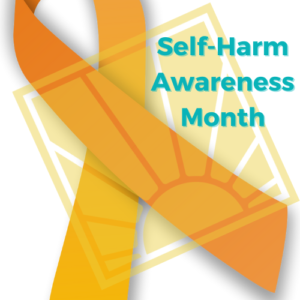
March is Self-Harm Awareness Month. The more you understand about self-harming behaviors, the more you can be of help to someone in need. Awareness is prevention!
What is self-harm?
Self-harm is a deliberate act of self-injurious behavior. It is hurting oneself on purpose.
People intentionally self-harm because of many different reasons typically due to expressing or coping with emotional distress. They may not know how to express themselves in any other way. They may be trying to gain control in a seemingly helpless situation. They might be crying for help or punishing themselves. They might be trying to relieve tension or release intrusive thoughts.
Does everyone who self-harms want to die?
No, but research shows a direct correlation between suicide/suicidal thoughts and people who have self-harmed before so it’s imperative to seek help for self-harming behavior. It could save a life.
What are some warning signs of self-harm?
Remember, you don’t know unless you see it happen or they tell you it’s happening. Never accuse someone of self-harming, but things you can look out for include:
- Always wearing long sleeves and pants
- Constant cut, bruises and burn injuries without explanation
- Scars in patterns, shapes, or words
- Avoidance of emotions and close relationships
- Signs of anxiety, depression, and impulsivity
What do I do if I find out someone I love is self-harming?
This is really difficult. You love this person and don’t want them to hurt themselves. It is important for them to know that you care about them and won’t judge their behavior. If they’ve entrusted you with the fact that they self-harm, you don’t want them to feel like they shouldn’t have told you. Listen and be supportive. It’s important that you don’t ignore the behavior or make them promise not to do it again. They need professional help. Encourage them to seek help. Mental health therapists are trained to evaluate the situation and provide appropriate treatment based on the individuals needs.
What does treatment include?
It really depends on the individual person who is self-harming and what they need. This is why it is imperative that they seek professional help. Treatments can include talk therapies such as Dialectical Behavior Therapy and trauma treatment therapies. There are medications that can be helpful. Also, intensive therapies such as partial hospitalizations and inpatient treatment centers are very beneficial for chronic and acute cases.
The following links provide more education and resources for self-harm awareness:
https://www.selfinjury.bctr.cornell.edu/resources.html
https://www.samhsa.gov/childrens-awareness-day/resources-suicide-prevention
https://www.nami.org/About-Mental-Illness/Common-with-Mental-Illness/Self-harm




